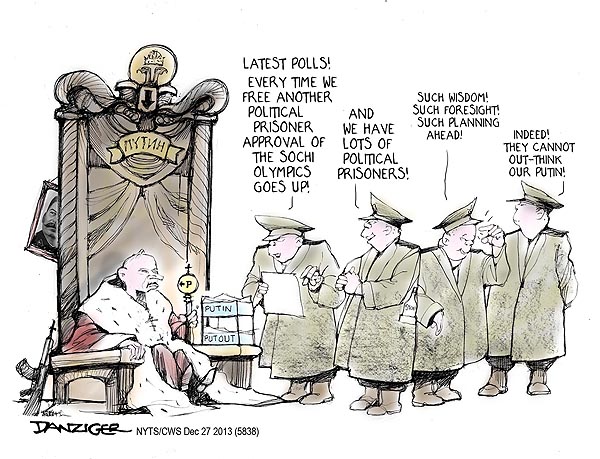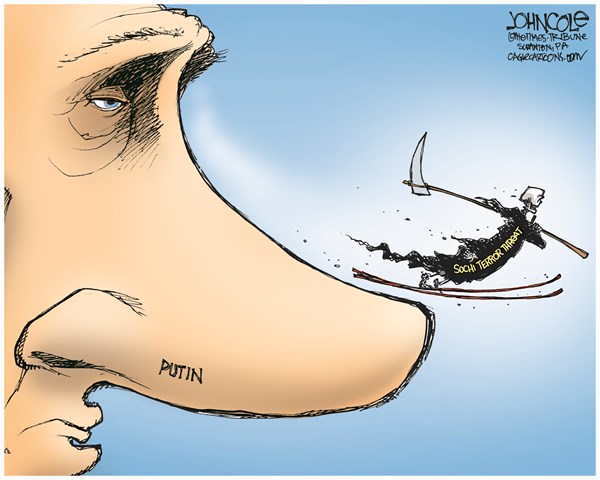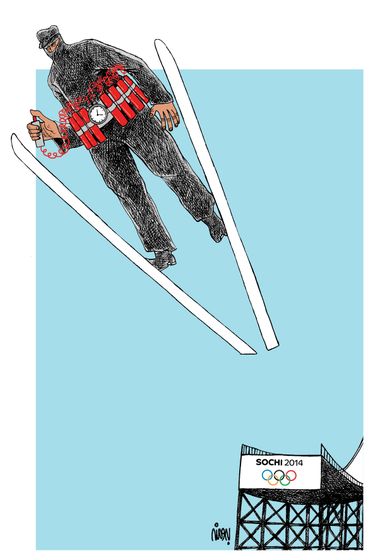Lovers and Fools in the Modern Romantic Comedy
Can lovers ever really be fools? Can fools really lose themselves in romantic love? The lover and the fool are comic literary archetypes, but they are funny in very different ways. Lovers in romantic comedies typically exhibit buffoonish humor; these movies are funny at the expense of their protagonists. We think their counter-times and missed messages are humorous for the clumsiness and coincidence they reveal, but the characters do not “know” that their experiences seem funny. Hugh Grant’s romantic anxieties must be genuine anxieties for his character in order to be funny to his audience. Even Shakespeare’s Kate from The Taming of the Shrew must be sincere in her impetuousness for her audience, guided by a humorous theatrical interpretation, to find them outrageous and funny. But she is never laughing—her position is quite the opposite of amused, in fact.
The fool seems different. Fools know they are speaking in wit and riddle, and they are disinterested players without a personal stake in the interpersonal dramas before them. Shakespearean fools are often androgynous; they do not meddle, at least with any personal agenda, in human passions. King Lear’s fool makes the crudest, even the most scathing jokes, yet he is “boy” to Lear, and sometimes he is even played by the same actress who portrays Lear’s daughter Cordelia.
Hamlet has a touch of the fool; in fact, the court jester Yoric is one of the only personalities he respects in the play. I have sometimes wondered if the impossibility of his relationship with Ophelia has to do with his changing role from lover to fool. It seems he cannot be both at the same time. If the courtiers think Hamlet’s out of his mind, then they cannot at the same time think he is fit to marry Cordelia. As a fool he is somehow ineligible for romantic courtship.
Can there ever be a fool-type presence in romantic comedies? For a moment I wondered if the protagonist’s best friend or neighbor might embody the fool. I had in mind Rhys Ifans’s in Notting Hill, but he too is a buffoon as opposed to a knowing riddler, and he too eventually finds love.
Actually, the traditional fool bears a closer resemblance to the stand-up comedian, who is part court jester, part truth speaker, and in those respects the stand-up comedian is a derivative of the Shakespearean fool archetype. Although the stand-up comic’s jokes extend to areas of sexual life that no one else will touch, the comic often also mocks or cynically rejects his or her own romantic prospects. Louis C.K.’s brash jokes about his wife are in some sense a testament to this. When the wife became ex-wife, the jokes seemed more shocking in retrospect. But is it too much to say that the unattached comedian was then freed to become an even more disinterested player? Maybe.
Some stand-up comedians (Steve Martin, Michael Keaton, and Bill Murray come to mind) explore the lover’s role with success, but this only works if they change hats. It seems the lover cannot know that he is the one telling jokes; he must become the joke. He must surrender to the humiliating experience of being in love. One exception might be Groundhog Day (1993), where only the protagonist and the audience understand why this courtship through repetition is funny; and Murray’s lover-protagonist is not sure, until late in the film, that he wants to cultivate any lasting personal ties.
Traditionally, the court jester is in but not of society. It is his detached stance in the drama of life that gives the fool license to say things no one else can say. He must genuinely appear to have nothing to gain and nothing to lose.
When the stand-up comedian stays court jester and also tries to be the lover, the results are confusing—but interesting. Consider Chris Rock’s Top Five, which contains some of Rock’s most experimental and wild tangents into the sexually outrageous (I was reminded of a Laurence Sterne novel) as well as some of the rom-com genre’s more stilted courtship moments. The film represents vibrant new terrain for Rock, but it does not leave one feeling confidant that the stand-up comedian can seamlessly hop from comedy stage to lover’s lair.
Yet Rock’s new genre within the romantic comedy genre could represent a broadening shift for the fool. Unlike Hamlet, Rock’s protagonist is presented with a love interest, Rosario Dawson, who prizes the fool over the lover. In turn, Rock’s languishing stand-up comedian character finds new inspiration through love. It is a transition in progress to be sure, but perhaps these once distinct archetypes are merging into a single character. Perhaps the lover is becoming a little savvier and the fool just a little more tender.
No Pryor Knowledge: How I Got Moved by Mudbone then Ambushed by Art
By Jake Austen
Last month I received an e-mail announcing Dick’s Last Stand, a performance by the artist Donelle  Woolford that was touring the country as part of the 2014 Whitney Biennial. Woolford (whom I had not heard of, but a cursory Internet search showed her to be a striking young black woman, based in New York, with an impressive CV of conceptual performance art pieces) would be re-creating an infamous 1977 performance by Richard Pryor, a subversive 40-minute stand up set he did for his NBC television show that was so filthy he knew it would be impossible to broadcast. That the Chicago performance was in my neighborhood at the Dorchester Projects (installation artist Theaster Gates’ art-as-social activism complex), and that no one we knew had heard anything about this show, made I seem so simultaneously accessible and mysterious that attendance felt mandatory. As I entered the performance space, seeing about a third of the fifty chairs filled, I hoped to be challenged, entertained, and provoked. I was not expecting to descend into a conceptual art wormhole, booby trapped with racial-taboo time bombs. But when dealing with Richard Pryor, combustibility is always a factor.
Woolford that was touring the country as part of the 2014 Whitney Biennial. Woolford (whom I had not heard of, but a cursory Internet search showed her to be a striking young black woman, based in New York, with an impressive CV of conceptual performance art pieces) would be re-creating an infamous 1977 performance by Richard Pryor, a subversive 40-minute stand up set he did for his NBC television show that was so filthy he knew it would be impossible to broadcast. That the Chicago performance was in my neighborhood at the Dorchester Projects (installation artist Theaster Gates’ art-as-social activism complex), and that no one we knew had heard anything about this show, made I seem so simultaneously accessible and mysterious that attendance felt mandatory. As I entered the performance space, seeing about a third of the fifty chairs filled, I hoped to be challenged, entertained, and provoked. I was not expecting to descend into a conceptual art wormhole, booby trapped with racial-taboo time bombs. But when dealing with Richard Pryor, combustibility is always a factor.
The show opened with Chester McSwain, a blues/jazz singer who gigs at the nearby Chant lounge, doing a single Bobby “Blue” Bland tune. After the song Woolford was introduced by a white fellow who seemed to be a part of the production (his whiteness coming in handy later when he played a disgruntled stagehand mumbling curses under his breath after Pryor demanded a stool). Then Woolford, as Pryor, walked through the audience, and took the spotlight, smoking a cigarette before being informed (by the 1977 TV studio producer, also played by the white guy) that there was a fine for smoking, which he/she did not take well.
Two things struck me immediately. The first was that Woolford did not look much like her publicity picture. Even taking the thick mustache and thespian transformation into account, the woman playing Pryor seemed to have a different build than the Woolford I’d seen online. The other thing that was apparent from the smoking exchange was that this interpretation of Pryor, though extremely faithful to the original text, seemed to bring subtext to the forefront, incorporating all the deep, dark information we now know about Pryor’s biography, relationships, and demons. In the original footage, Pryor’s response to the smoking ban highlights the sense of mischief and wicked joy that the comic brought to the stage; he doesn’t seem too irked, perhaps even tickled to get some laughs out of it. In Dick’s Last Stand he/she seems deeply hurt and angry at this indignity. Of course, the original performance was about Pryor raging against the television machine by ignoring the censors. That rage, however, was not expressed in his tone.
Not so in Woolford’s performance, which was an intense, powerful, spellbinding presentation of Pryor’s words spoken by a sullen, seething artist who has taken all the bullshit he/she is gonna take. Woolford told jokes, stories, and observations in a voice less musical and lively than Pryor’s, with eyes expressing more burden than Pryor ever let show. The vulnerability that Pryor consistently revealed (not to be confused with the nervous, jittery routine that he utilized in many of his lesser movies) was something the Dick’s Last Stand Pryor had no intention of exposing. On the Not-Ready-For-Primetime TV version of that performance (preserved on degraded, time code-tattooed video on the Richard Pryor Show DVD set) the antagonism between Pryor and the stagehands seems nonexistent, he’s just fucking with them and they don’t seem to care. In Dick’s Last Stand it’s a powder keg.
Sunday Stand-Up: Temporary Retirement (+ Louis C.K.)
Tracy Wuster, Editor
For the time being, or maybe permanently (who knows?), we are retiring the “Stand-up Sunday” (or “Sunday Stand-Up”) feature. All Sunday posts, actually. We will be moving to a twice per week schedule, with posts on Monday and Thursday (with an occasional post at other times, if we feel like it, or have a lot of posts). We will still have discussions of stand-up, I am sure, and we welcome you to contribute (yes, you, you-who-are-reading-this).
As we approach 100k views, we are thankful for your visiting us, especially those of you who are regular readers (we hope you are out there). But we don’t know much about our readers, so please take a minute to fill out these polls:
Thank you for answering. We are very curious about you, our readers, and hope that we are presenting you with writing that you find worth reading and a site that is worth coming back to. We appreciate feedback on the design, content, and direction of the site.
And since this is the final Sunday Stand-Up post for awhile, at least, I will end with some stand-up.
Stand-Up Sunday: Robin Williams
“It’s the idea of trying the other things that people wouldn’t do.”
This is Robin Williams eventual answer to the initial question posed by James Lipton on an episode of his famous Inside the Actors Studio. Eventual because it is given 7 minutes and 30 seconds after the “start” of the interview. What transpires before is one of Williams’s most memorable performances, posted here.
The question posed to Williams by Lipton seemed almost superfluous. “There is a phrase that you have used on various occasions to help us understand you and that phrase is legalized insanity…what is legalized insanity?” He already had his answer.
The clip is not technically stand-up comedy but Robin Williams is not technically a stand-up comedian. At least not in how stand-up comedians tend to be characterized. What fascinates me most about his appearance on Inside the Actors Studio is that he had effectively demonstrated his brilliance and skill as a comedic performer before the interview even began; with an improvised solo performance that would have been legendary in any stand-up comedy club, let alone an introduction to a basic cable interview show.
By now everyone should be familiar with the career of Robin Williams. One need not spend much time on IMDB to know he has provided some of the best performances, comedic and otherwise, in some of the greatest films and television shows of all time. Yet with all the Oscar, Emmy, and Golden Globe awards his work as a stand-up often takes a back seat. Many remain shocked to find out that he has turned in some of the most iconic stand-up comedy specials as well. It is no small feat to have created six highly regarded comedy specials over the span of 30 years, and yet be more well known for movie roles.
This clip encapsulates much of Williams’s trademark manic, improvisational style. Complete with material that strikes as relevant more than 25 years later.
Stand-Up Sunday: Tig Notaro
To those who do not follow the contemporary world of stand-up comedy Tig Notaro is not exactly well known. To those who do she is one of the best working today. Tig’s style of comedy is that of a storyteller, a storyteller who’s low key style is punctuated by a series of understatements that combine both a keen sense of awareness and a subtle naiveté that the audience is invited to participate in. Much of Tig’s humor relies on this juxtaposition, creating laughs by intentionally not pointing out the obvious, letting the audience do it instead.
This is what I find the most entertaining about the story in this first clip.
This second one is shorter but offers a similar feel.
While much of Notaro’s career has been played under the radar that is likely to change with her recent revelation that she had been diagnosed with breast cancer. Like her stand up, what was noteworthy was in how Notaro chose to publicly announce her diagnosis; onstage during a set at Largo in Los Angeles in late August. Word of this announcement spread shortly after an audience member posted this reflection on the special moment created during the performance. America’s preeminent comic of the moment Louis C.K. was in attendance, noting on his Twitter account “In 27 years doing this I’ve seen a handful of truly great, masterful stand up sets. One was Tig Notaro last night at Largo.” C.K. recently released the audio recording of the entire set through his website, a gesture noted for its similarity with his own process of realeasing material to fans. While I cannot post the audio clip to this site I would suggest downloading it as it definitely captures a moment that defies the attempts to describe it cited here. A set that truly captures the essence of what makes live performance different from any other.
Stand-Up Sunday: Dave Chappelle
Dave Chappelle has been an enigma the last few years. After famously walking away from his wildly popular show on Comedy Central Chappelle has largely remained out of the public eye. More recently the comedian began playing a series of unannounced shows throughout the country that while sparking significant hype have been terribly disappointing.
That is a shame because I still find Chappelle to be one of the finest stand up comics. Ever. Recent public flops aside his two specials, Killing Them Softly and For What It’s Worth, remain two of my favorite specials of all time.
Though not necessarily a political comedian Chappelle does occasionally touch upon politicians, especially those who might be linked to the Black experience. Long before Barack Obama became the nation’s first black president comedians like Cedric the Entertainer opined about Bill Clinton being the de facto first one.
The clip here is from 2000 right near the end of the Clinton Administration. There are some timely references to then President Clinton’s candor and coolness that those who saw his recent rave review at this year’s Democratic National Convention will find timeless as well. And since Chappelle initially cut his comedy chops as a teenager at the Washington D.C. improv in the late 80’s there is always room for a well placed mayor joke as well.
See any similarities with the persona here with what we saw during the Democratic Convention?
I recommend watching the rest of this special, found here, or his second special following the release of Chappelle’s Show, found here.
Stand-Up Sunday: Joan Rivers
Tracy Wuster
 The most famous comedian I have ever met is Joan Rivers, who I met on the street in New York City while in town researching Mark Twain at the New York Public Library. I haven’t seen “Joan Rivers: A Piece of Work” yet, but I really want to. Anyone want to write a review of the movie? Or a piece on the importance of Rivers?
The most famous comedian I have ever met is Joan Rivers, who I met on the street in New York City while in town researching Mark Twain at the New York Public Library. I haven’t seen “Joan Rivers: A Piece of Work” yet, but I really want to. Anyone want to write a review of the movie? Or a piece on the importance of Rivers?
“I succeeded by saying what everyone else is thinking.”
See around 4:00 for a heckler and Joan’s response about the reasons for comedy
From a story on “Fresh Air”:
“Because it’s so politically correct now,” Rivers tells Fresh Air‘s Terry Gross. “Everybody is so uptight to say anything, so I started making jokes about anything to my friends, and one of them said, ‘Just jot it down. There’s a book in this.'”
Let’s all laugh at: The Olympics!
Tracy Wuster
Like all red-blooded Americans, I loves me some Olympics. I will have a hard time getting work done over the next couple weeks with six stations of Olympics (+ streaming). And the fact that my TV information calls it the “XXX Summer Olympics” makes it even better (in a 14-year old funny sort of way). Speaking of TV, NBC quickly admits it is horrible and offers a solution.
General Olympic Humor
Some Olympic stand-up
Jerry Seinfeld
Rob Cantrell
Anthony Salame
The Space Olympics–Totally Cancelled
Sochi 2014 (the Problem-Free Russian Winter Olympics):
*the Olympics have become the focal point of anti-Putin satire.
*the problems with venues and accommodations have spawned a twitter account (or two).
*Saturday Night Live on figure skating.
*Buddy Cole on Russia (from Colbert Report)
*political cartoons (do you see any themes?)
See below for London!
REMEMBERING DICK GREGORY
Sam Sackett
I saw Dick Gregory once, and I want to commemorate that occasion while he is still alive. I hope he reads this.
Before I enter upon my narration, let me introduce myself and set the stage.
My mother did not tell me I was Jewish until I was 46 years old. I was not raised Jewish in any way. We ate pork and ham at home. I had never been inside a temple or synagogue. And yet I was thoroughly familiar with Jewish family life because I listened to the radio, especially the Jewish comedians like George Jessel (“Hello, Mama, this is Georgy”), Eddy Cantor, and Minerva Pius, who was Mrs. Nussbaum in Fred Allen’s Alley (“You were expecting maybe Greta Garfinkel?”). I don’t count Jack Benny; he was a comedian who happened to be Jewish, not a Jewish comedian. Gertrude Berg was not a comedian, but her portrayal of Jewish life in the soap opera The Goldbergs certainly had its effect. There were others whose names I have forgotten, but because of radio comedians I became thoroughly familiar with what English sounded like with a Yiddish accent. And long before I was 46 I was keenly aware both of antisemitism among the kids I went to school with and of the way in which Jewish comedians were gradually making Jews more familiar and hence more acceptable to goyim.
Now that I’ve introduced myself, let me set the stage. After the Civil War, the United States Army set up military installations throughout the western U.S. with the purpose of protecting settlers moving west from what we now know are Native Americans but were then called Indians. Many of the troops assigned to these forts were what were known as “buffalo soldiers” – freed slaves. After all, during the war the Union army had made use of “colored” troops – not, of course, integrated into white units, but as separate but equal units – and these soldiers had acquitted themselves well in battle. Around the outposts towns grew up, and as time went on some of them became almost civilized. The state college where I was teaching was located in such a town, and buffalo soldiers had served in the adjacent fort.






























